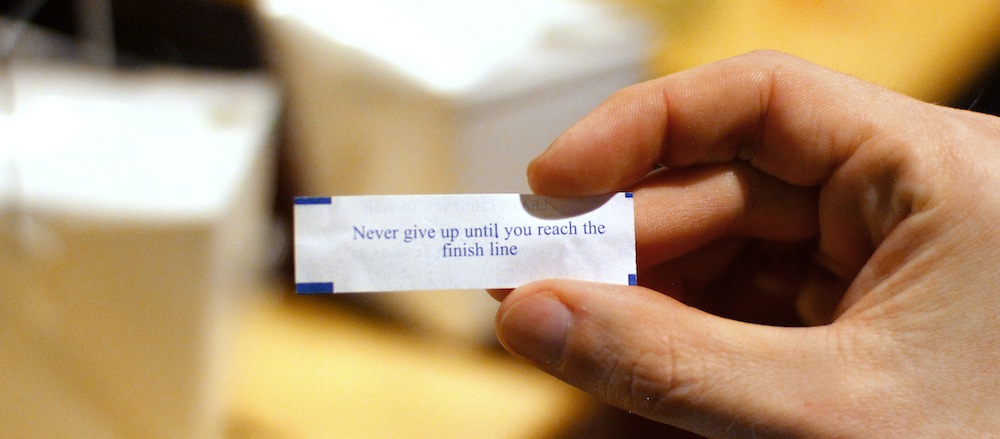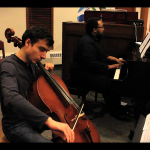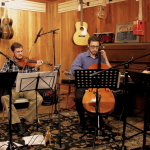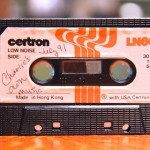This weekend marked the end of the Fortune Cookie Songwriting Quest. Our compilation album is going to be a pretty interesting mix of vocal and instrumental tracks from all over the world. I’ll tell you more about them in an upcoming post. In the meantime, I thought I’d share my fortune cookie-inspired bassoon and trombone duet, plus some composing tips for these bass clef instruments.

The fortune I drew was “Never give up until you reach the finish line.” Here’s the piece I came up with, perfomed by the talented duo of Maia Hamann on bassoon and Nick Syman on trombone:
If you’d like the sheet music for “Finish Line,” please email me (charlie@charliemccarron.com) and I’ll send you a free copy of the score and parts.
Tips for Composing Bassoon and Trombone Duets
I wouldn’t have thought to write for two bass clef instruments, but Maia and Nick are two of the most talented musicians I know, so I thought I’d try it out. It was a good challenge, especially for someone who hasn’t played a wind instrument. Here are a few things I learned in the process:
- Classical bassoonists and trombonists are used to reading in tenor clef for their high notes, but jazz trombone parts usually just use bass clef with the high notes on ledger lines.
- A nice chamber group range for trombone is F2 (F below the bass clef) to D4 (D above middle C). In my first draft, Nick was worried that the trombone parts above that D4 would start to sound too dramatic and overpower the bassoon, so I brought those parts down an octave.
- Bassoon can handle higher notes more easily than trombone. Things start to get hairy for bassoonists around D5 (second octave above middle C).
- The lowest note a bassoonist can play is Bb, which is a fun note! That happens in my piece around 2:55.
- The A#s in my piece were not popular. Bb is much more common for wind players to see.
- I avoided close harmonies in the really low range so it wouldn’t get muddy. But I think you could use it as a cool effect. Being physically present for a low-range performance is way better than a recording, and close, low harmonies would probably create some cool vibrations.




I don’t listen to much trombone + bassoon music, so I can’t really compare this to anything, but I really enjoyed that.
Thanks Mike! Can’t say that I’ve ever heard a bassoon/trombone duo either. I think I’m going to take Richard Russell‘s advice to heart and keep writing for more unusual combos to help fill those niches.
Would I be able to find this sheet music anywhere? I am a bassoon player myself and would like to give this piece a try.
Hi Daniel,
Thanks for your interest! Shoot me an email – charlie@charliemccarron.com – and I’ll send you a copy.
-Charlie
I got the sheet music a couple months back, and before when I was more comfortable on cello, a friend of mine and I played it on cello and trombone via separate recording (quarantine things), and now I can read tenor on bassoon, we’re planning to play it for the band chamber concert this coming year. I’m really excited!
Yay, so glad to hear it! Hope your performance goes well!